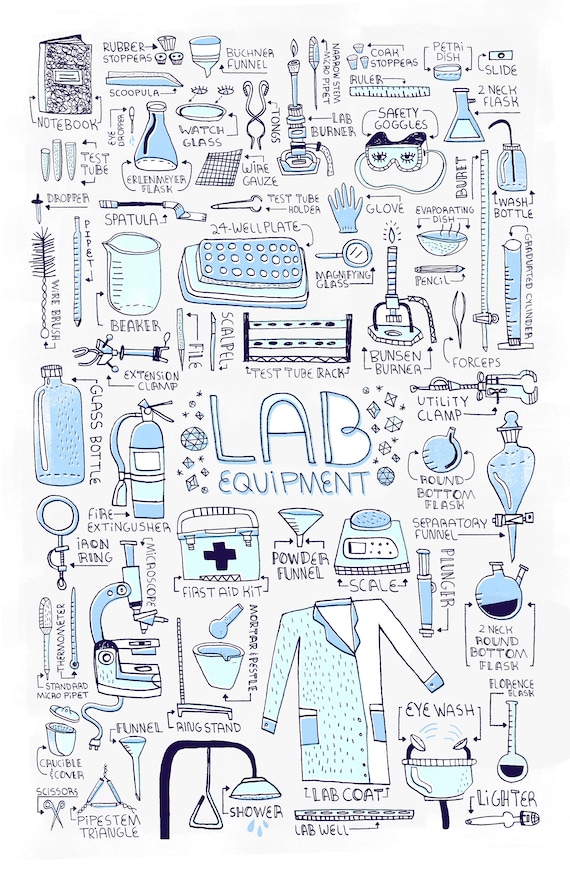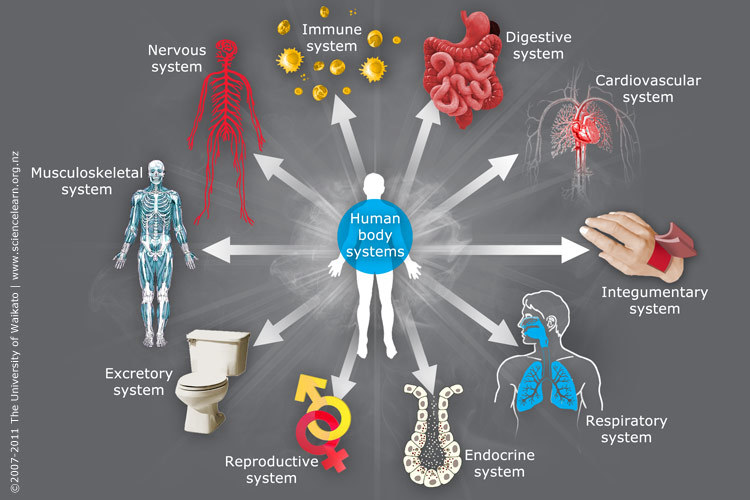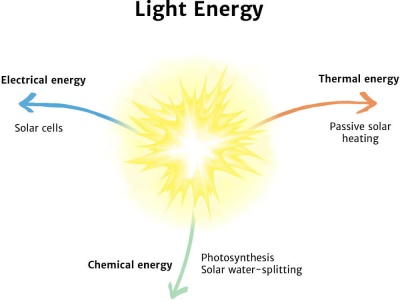9M1 Science
Section outline
-
Welcome to the 9M1 Science class. The majority of you would know me from last year; for the new students, my name is Ms. Premdeep, and I will be your Science teacher for this year. If you have any questions or queries about your learning, please ask me in class, or you can email me using the id cpremdeep@mhjc.school.nz. I am very excited to have you all in my class.
Context : Caught in the Web
Science Strand: Living World
-

Success Criteria: I can/have...
- List the safety rules in a laboratory.
- Identify safety hazard symbols
- Identify common laboratory equipments and state their use.
- Label the parts of a Bunsen burner.
- Demonstrate the safe use of a Bunsen burner.
Activities:
- Teacher explanation of different equipments used in the lab and their uses.
- Watch a Video on the safe use of a Bunsen burner- https://www.youtube.com/watch?v=VLpClJHT9bQ
- Teacher Demo
- Complete pages 7,8,9,10,11, 12 and 15 from Scipad Book 1 into your notebook.
Homework:
Education Perfect task -
Success Criteria: I can/have...
- Explain the structure and function of the Nervous system
- List the different parts in the nervous system.
- Label the different parts of a neuron.
Activities:
- Teacher Explanation
- Watch a Video on Central nervous system and Neurons - Brain Pop
- Create a little story board to show how messages are passed along the central nervous sytem for one of the following scenarios
- Child on a busy road
- Touch Stinging Nettle
- Touch a hot plate
- Taste yummy food.
5. Create a slideshow on Motor Neuron disease. The following are the questions that will help you with your task
a) What is Motor Neuron disease b) Symptoms for Motor Neuron disease c) Is there a cure for Motor Neuron disease? d) Treatment and care for Motor Neuron diseaseHomework:
Complete any pending Education Perfect taskEXPLORE / TŪHURA learning intentions:
- We are EXPLORING to locate the position of the major organs in our body such as the brain, heart and lungs.
- We are EXPLORING to recognise the different parts of some of our major organs such as the brain, heart and lungs.
FOCUS / ARONGA learning intentions:
- We are FOCUSING to develop an understanding of the healthy functioning of our major organs.
- We are FOCUSING to develop an understanding of the impact of the online world and sedentary lifestyle on the human body.
-
Kia ora 9M1, this week we will be via GMEET
Success Criteria: I can/have...
- List the main parts of the brain and their functions
Activities:
- Create a model brain
- Watch the video on Brainpop
- Complete the quiz ion Brain pop
- Answer the following questions in your books a) List down the main parts of the brain b) Write down the function of each part of the brain. You can use brain pop and the document called create a model brain to answer the questions
Homework:
Complete the Education Perfect task -
Success Criteria: I can/have...
- Identify the different parts of the human brain
- Identify the function of each part of the brain
Activities:
- Create a Brain Hat
- Identify the parts of the brain and its function using the following link- https://www.brainline.org/tbi-basics/interactive-brain
- Complete the questions from the document called "Parts of the Brain" into your notebooks.You can use the above link to find the answer.
- Create a Mindmap on parts of the brain
- Stretch activity- https://tbi.cemmlibrary.org/Interactive-Brain/Interactive-Brain
Homework:
Please complete any pending Education Perfect task and your lockdown work.EXPLORE / TŪHURA learning intentions:
- We are EXPLORING to locate the position of the major organs in our body such as the brain, heart and lungs.
- We are EXPLORING to recognise the different parts of some of our major organs such as the brain, heart and lungs.
FOCUS / ARONGA learning intentions:
- We are FOCUSING to develop an understanding of the healthy functioning of our major organs.
- We are FOCUSING to develop an understanding of the impact of the online world and sedentary lifestyle on the human body.
-
Success Criteria: I can/have...
- Identify the different parts of the Human eye
- List the functions of the different parts of the Human eye.
- Explain the working of the Human eye
Activities:
- Watch a Brain Pop Video- https://www.brainpop.com/health/bodysystems/eyes/?panel=login&refer=%2Fhealth%2Fbodysystems%2Feyes%2Fworksheet%2F#
- Teacher Demo- Cow eye Dissection
- Label the eye interactive- https://www.sciencelearn.org.nz/resources/3007-labelling-the-eye
- Write the functions of the different parts of the eye in your notebook using the link above.
- Label the parts of the Eye- Printable from Scipad.
- Ask a Scientist- https://www.nei.nih.gov/learn-about-eye-health/nei-for-kids/about-eye
- Complete the answers to the following questions in your notebooks using the attached powerpoint. a) What is Myopia? b) How is it corrected c) What is hypermetropia?
Homework:
Please complete any assigned Education perfect taskEXPLORE / TŪHURA learning intentions:
- We are EXPLORING to locate the position of the major organs in our body such as the brain, heart and lungs.
- We are EXPLORING to recognise the different parts of some of our major organs such as the brain, heart and lungs.
FOCUS / ARONGA learning intentions:
- We are FOCUSING to develop an understanding of the healthy functioning of our major organs.
- We are FOCUSING to develop an understanding of the impact of the online world and sedentary lifestyle on the human body.
-
Success Criteria: I can/have...
- Explain the basic function of the circulatory system.
- Explain the functioning of the lungs.
- Identify the effects of a sedentary life on human health
Activities:
- Kahoot- Recap of the lessons on Eye, Brain and Heart
- Literacy task- Read through the article, analyse the graph and answer the questions at the bottom of the page in the following link- https://www.sciencenewsforstudents.org/article/analyze-does-moderate-screen-time-boost-teen-happiness
- Watch a video on the circulatory system
- Create a comic showing the different steps in the circulatory system.
- Use the Scipad to complete the task on Lungs.
Homework:
Complete the Education Perfect task.EXPLORE / TŪHURA learning intentions:
- We are EXPLORING to locate the position of the major organs in our body such as the brain, heart and lungs.
- We are EXPLORING to recognise the different parts of some of our major organs such as the brain, heart and lungs.
FOCUS / ARONGA learning intentions:
- We are FOCUSING to develop an understanding of the healthy functioning of our major organs.
- We are FOCUSING to develop an understanding of the impact of the online world and sedentary lifestyle on the human body.
-

Success Criteria: I can/have...
- Explain the difference between Prokaryotic and Eukaryotic cells
- Explain the difference between plant and animal cells
- Define an organ system
Activities:
- Teacher Explanation and recap of MRS GREN
- Complete the document on Organ system into your notebooks.
- https://askabiologist.asu.edu/cell-viewer-game/play.html
- Draw the basic structure of a plant and an animal cell
- Complete a venn diagram to show the similarities and differences between a plant and animal cell
Homework:
Complete the EP taskEXPLORE / TŪHURA learning intentions:
- We are EXPLORING to locate the position of the major organs in our body such as the brain, heart and lungs.
- We are EXPLORING to recognise the different parts of some of our major organs such as the brain, heart and lungs.
FOCUS / ARONGA learning intentions:
- We are FOCUSING to develop an understanding of the healthy functioning of our major organs.
- We are FOCUSING to develop an understanding of the impact of the online world and sedentary lifestyle on the human body.
-
PLAN & DO / WHAKAMAHI learning intentions:
- We are PLANNING to apply our understanding of the working of the heart and the lungs to solve the mathematical questions on cardiac output and produce a graph.
-
Success Criteria: I can/have...
- Define the term " Energy"
- Describe some common forms of energy.
- Describe a number of Energy transformations.
- Describe energy efficiency and calculate the efficiency of an appliance.
Activities:
- Energy in Doritos- Experiment to find the amount of heat energy a dorito chip would supply to water. Details in the attached document.
- Write few notes on Energy from the board.
- Complete pages 82-84 from Scipad.
- Experiment on Energy efficiency of different types of balls.
Homework:
Please complete the Education Perfect task. -
Success Criteria: I can/have...
- Define heat energy.
- Explain the three ways in which heat energy is transferred.
- Identify the three types of heat transfer
Activities:
- Practical task- Investigating Heat energy. Identifying the best conductor of heat. Copy the table from the board for this task and enter the data during the practical task. Complete the graph for the task.
- Complete the EP task on the above practical task.
- Watch the follwoing video on Heat transfer- https://www.youtube.com/watch?v=HpCvWuvCUoA
- Read through the document- Heat Energy
- Complete the document- Energy and heat.
- Practical task- Create a thermos with the materials provided. You will be provided with a glass beaker, hot water and some materials. Try and retain the heat in the beaker for as long as you can with the different materials.
Homework:
Complete the EP task -

Success Criteria: I can/have...
- Identify conductors and Insulators of heat.
- Define Light Energy
- State the Law of Reflection
Activities:
- Create a Thermos using some recycling materials.
- Complete the document on Heat.
- Conduct an experiment on the " Law of Reflection" using a lightbox.
- Complete Pages- 91, 92 and 95 from Scipad.
- Kahoot- Conductors & Insulators b) Conduction, convection and Radiation.
Homework:
Please complete the EP task -
Kia ora...
Success Criteria: I can/have...
- Define Light
- List the different properties of Light
- Use a Light box
- Explain the different properties of light.
- Explain how we see the things around us.
Activities:
- Learn the concept of refraction by completing an experiment using the Light box and the rectangular glass prism- Scipad page 100, 101.
- Learn about the reflection of light from a convex and concave lens- Experiment details in the Scipad page 98
- Write down the definition and properties of light in your note book from the powerpoint.
- Complete pages 97, 99, 102 from the Scipad into your notebooks.
Homework:
Complete the EP task -
Success Criteria: I can/have...
- Explain how human beings see colour.
- Build a series and parallel electric circuit.
Activities:
- Watch a video- Physics of colour- https://www.youtube.com/watch?v=x7tpOkfNIHE&list=RDCMUCOc7hnpoxi-yxukCuSIQzzw&index=1
- Watch a video- Absorption of Light- https://www.youtube.com/watch?v=VwNKPgo3oxA
- Play Kahoot- Light
- Complete pages 109-111 from Scipad 1
- Build a series and parallel electric circuit.
- Measure the distribution of current in a Parallel and Series circuit using an ammeter.
Homework:
Complete the EP task -
Success Criteria: I can/have...
- Describe how current electricity is produced.
- Draw simple circuit diagram.
- Describe how current flows in series and parallel circuit.
Activities:
- Complete a series circuit- & Parallel circuit- Page 74
- Measure the current in series and parallel circuit
- Brain pop video- Electricity, Current electricity
- Complete Pages 67, 68, 69, 70 from the Scipad
- Fast Finishers- http://www.nobraintoosmall.co.nz/html/Level1_physics/NCEA1_physics_elec_quiz.html
Homework:
Please complete the task on EP -
Success Criteria: I can/have...
- Define a Simple Machine.
- List and explain the different kinds of Simple Machine.
- Identify the First, Second and Third order levers.
Activities:
- Teacher Explanation
- There are a lot of different links and powerpoint given below. Using these resources please answer the following questions in your notebooks. a) Define a Simple Machine b) List down the different types of Simple Machine c) What is a Lever? d) Explain with diagrams the three orders of levers with example e) Define a Pulley and explain the difference between somple and compound pulley.
- Complete the Session on Simple Machines in Scipad.
https://www.softschools.com/examples/simple_machines/screw_examples/509/- Screw
https://www.softschools.com/examples/simple_machines/simple_pulleys_examples/514/- Simple Pulley
https://www.softschools.com/examples/simple_machines/compound_pulleys_examples/516/- Compound Pulley
https://www.softschools.com/examples/simple_machines/levers_examples/510/- Levers
https://www.softschools.com/examples/simple_machines/class_one_lever_examples/511/- Class One Lever
https://www.softschools.com/examples/simple_machines/class_two_lever_examples/512/- Class Two Lever
https://www.softschools.com/examples/simple_machines/class_three_lever_examples/513/- Class Three Lever
4. Brain Pop Video- https://www.brainpop.com/science/motionsforcesandtime/levers/
-
Kia ora...
Success Criteria: I can/have...
- Create a Rube Goldberg Machine.
- Explain the Energy changes in the machine.
Activities:
- In your group create a Rube Goldberg Machine.
Homework:
Continue to design your Rube Goldberg Machine.EXPLORE / TŪHURA learning intentions:
- We are EXPLORING to recognise the scientific concepts involved in different modes of transport.
- We are EXPLORING to investigate the different types of forces in play while riding a transport.
- We are EXPLORING the different types of fuel in use.
FOCUS / ARONGA learning intentions:
- We are FOCUSING on explaining the world of transport and its evolution using physical world and material world strand in Science.
PLAN & DO / WHAKAMAHI learning intentions:
- We are PLANNING to apply our scientific understanding so that we can make informed decisions on the future of transport.
-
Success Criteria: I can/have...
- Identify the contact and non-contact forces.
- State Newtons Laws of Motion.
- Calculate force given mass and acceleration
Activities:
- Write here
- Write here
Homework:
Write here... -
Success Criteria: I can/have...
- Identify all the forces acting on an object.
- Define Friction, Drag force and fluid resistance.
Activities:
- Few slides on Fluid resistance and different forces acting on objects.
- Watch small portion of the following video on Aerodynamics- https://www.youtube.com/watch?v=3KqjRPV9_PY
- Make a dart plane and another paper plane shown in the video and compare their speed and how long they stay in air- https://www.youtube.com/watch?v=EDiC9iMcWTc
- Complete the quiz in the following BBC bitesize link- https://www.bbc.co.uk/bitesize/topics/zsxxsbk/articles/zxqrdxs
- Complete the attached documents and upload it in the assignment box by Friday 5pm
- Mass & Weight on other planets- https://www.exploratorium.edu/ronh/weight/
- Josiah- Please complete the document on forces and mark your work using the answer sheet provided. Others can it a go too!
Homework:
Brain pop lesson and the attached documents -
Week 6
Success Criteria: I can/have...
- Identify the forces on different objects.
- Identify the difference between Mass and weight.
- Convert between units of time and distance
Activities:
- Kahoot on forces- https://play.kahoot.it/v2/lobby?quizId=c120b11d-aa13-480a-9fa4-9843c0c67143
- Practical task- Conduct an experiment to find the impact of wingspan on the time the helicopter stays in air. The task will be explained during the online session and the document can be found in the folder called - Wingspan. Print the Wingspan template and follow the directions in the document. Note the time each paper plane takes to reach the ground. Repeat trials three times. Note the time in the table provided. The Method and the table should be either printed and glued into your notebooks or handwritten. You can try and complete this task with your friend via Google Meet or Zoom.
Homework:
Complete EP task -
Kia ora...
Success Criteria: I can/have...
- Calculate the speed, distance and time of objects.
Activities:
- Complete the Brain Pop task
- Complete the EP task on Speed
- Complete the speed calculations in the folder
- Josiah- Complete the EP Task on Velocity, Speed-time graph.
Homework:
Complete the above tasks by the due date -
Week 8
Success Criteria: I can/have...
- Interpret Distance- Time Graph
- Plot Distance-Time Graph
- Calculate velocity from Distance- Time Graphs
Activities:
- Complete the documents on Distance- Time Graph in your folders
- Education Perfect task for CAT Practice- This will be up by Wednesday morning
- CAT- Timeline and topics
Homework:
Please complete all the above tasks by Friday the 17th of September at 3pm. There will be a folder for you to upload your work. -
Week 9
Success Criteria: I can/have...
- Plot a Distance Time graph from a table of values.
- Create a table of values from a Distance- Time Graph.
- Calculate Average velocity from a Distance - Time Graph
- Convert between units of speed
Activities:
- Complete the documents in the folder in your notebooks and upload your work in the assignment folder by Friday 3pm.
- Scientific literacy- Analyse the graph and answer the questions in the following article- https://www.sciencenewsforstudents.org/article/analyze-this-cows-burp-less-methane-after-early-life-treatment
- EP Task
Homework:
Please complete all of the above work by the due date -
EXPLORE / TŪHURA learning intentions:
- We are EXPLORING to recognise the scientific concepts involved in different modes of transport.
- We are EXPLORING to investigate the different types of forces in play while riding a transport.
- We are EXPLORING the different types of fuel in use.
FOCUS / ARONGA learning intentions:
- We are FOCUSING on explaining the world of transport and its evolution using physical world and material world strand in Science.
PLAN & DO / WHAKAMAHI learning intentions:
- We are PLANNING to apply our scientific understanding so that we can make informed decisions on the future of transport.
Week 10Success Criteria: I can/have...
- Explain the difference between Electric, Hybrid and Petrol cars.
- Explain the science behind the working of the above cars.
Activities:
- EP task on Cars
- Answer the questions in the attached document. You can complete this task on a Google document.
- Complete the revision task in your notebook.
Homework:
Complete the above tasks and upload it by 29th september -
PROJECT WEEK
-
Success Criteria: I can/have...
- Identify most of the elements on the periodic table.
- Explain the layout of the periodic table.
- Identify the metals , non-metals and metalloids in the periodic table.
Activities:
- Use the following link to complete the periodic table document in your notebooks - https://www.rsc.org/periodic-table
- Choose one element from the periodic table in the link above and write about its history.
Education Perfect task
-
Success Criteria: I can/have...
- Explain the difference between and element, molecule, mixture and a compound.
- Identify an element, mixture and a compound.
- Explain the particle theory of matter.
Activities:
- Complete the attached documents in your note books.
Homework:
Complete EP tasks -
Success Criteria: I can/have...
- Identify mixtures.
- Define the terms solute, solvent, solution, dilution, concentration, saturation.
- Plan and carry out filtering investigation.
- List the different methods of separating mixtures.
Activities:
- Write the main definitions from the Powerpoint presentation into your notebook.
- Complete the attached document called solutions into your notebooks. The answers are at the bottom of the document for your to mark.
Homework:
Complete EP task -
Kia ora...
Success Criteria: I can/have...
- List all the different techniques to separate mixtures.
- Explain the different methods of separation of mixtures.
Activities:
- Complete the attached document in your notebooks and check your answers.
Homework:
Complete the Education Perfect task. -
Success Criteria: I can/have...
- Define Chromatography
- Explain the principle behind chromatography.
Activities:
- Copy notes from Google Jamboard into your notebooks.
- Complete the attached document in your science notebooks. The answers are at the bottom of the document for you to mark.
Homework:
Complete all pending EP task. -
Success Criteria: I can/have...
- Explain the method of Fractional distillation.
Activities:
- Watch a video on Fractional distillation- https://www.youtube.com/watch?v=PYMWUz7TC3A
- Watch a video on diffusion- https://www.youtube.com/watch?v=KRLNDTmBFZY
- Complete the attached document in your notebooks.
Homework:
Complete all pending tasks -
Success Criteria: I can/have...
- Explain the difference between Physical and chemical changes.
- Identify physical and chemical change.
Activities:
- Watch the video on Brain Pop and complete the quiz.
- Complete EP task
Homework:
Complete all pending tasks
